
|
Astronomy Picture Of the Day (APOD)
 A Crescent Earth At Midnight
A Crescent Earth At Midnight
6.10.1996
The Earth's northern hemisphere appears outlined as a sunlit crescent in this dramatic view from the GOES 8 satellite. The image was made near midnight for the Geostationary Operational Environmental Satellite on June 22 this year, two days after the Summer Solstice.
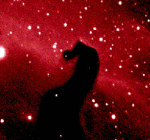 A Close-Up of the Horsehead Nebula
A Close-Up of the Horsehead Nebula
5.10.1996
1500 light years away lies a nebula of quite peculiar shape. How did the dark dust cloud shown above come to be shaped like a horse's head? Nobody knows! Barnard 33, as this...
 Globular Cluster Omega Centauri
Globular Cluster Omega Centauri
4.10.1996
Does an old, red globular cluster have any hot, blue stars? The rightmost picture, taken by the Ultraviolet Imaging Telescope in ultraviolet light, shows that indeed it does. Pictured, Omega Centauri is the largest known globular cluster in our Galaxy, containing well over a million stars.
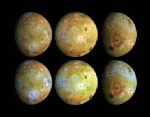 Three Views of Jupiter's Io
Three Views of Jupiter's Io
3.10.1996
The Galileo spacecraft orbiting Jupiter continues to return impressive results. The Galileo team has just released three more photographs of Jupiter's volcanic moon Io taken in June. These three photos are reflected at the bottom of the above picture, digitally enhanced to better show important features.
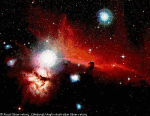 Orion's Horsehead Nebula
Orion's Horsehead Nebula
2.10.1996
The Horsehead Nebula is arguably the most famous nebula on the sky. It is visible as the black indentation to the red emission nebula seen just to the right of center of the above photograph. The bright star near the center is located in the belt of the familiar constellation of Orion.
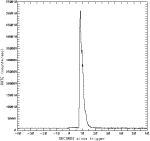 BATSE's Biggest Gamma Ray Burst (Yet)
BATSE's Biggest Gamma Ray Burst (Yet)
1.10.1996
Something big exploded but astronomers have no idea what. On September 24th, the Burst and Transient Source Experiment (BATSE) onboard the orbiting Compton Gamma Ray Observatory recorded the most intense gamma ray burst in its five year history.
 Exploring The Universe With IUE (1978-1996)
Exploring The Universe With IUE (1978-1996)
30.09.1996
How do planets, stars, and galaxies form? How do they evolve? The International Ultraviolet Explorer (IUE) satellite was launched in 1978 and operated by NASA/ ESA/ PPARC to help provide answers to some of the most fundamental questions about the contents of our universe.
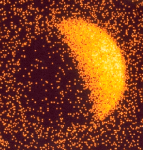 The X-Ray Moon
The X-Ray Moon
29.09.1996
This X-Ray image of the Moon was made by the orbiting Roentgen Observatory Satellite (ROSAT) in 1990. It shows three distinct regions: a bright X-ray sky, a bright part of the Moon, and a relatively dark part of the Moon. The bright X-ray sky is due to the diffuse cosmic X-ray background.
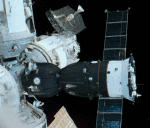 A Soyuz at Mir
A Soyuz at Mir
28.09.1996
Pictured above is a three person Russian Soyuz capsule with wing-like solar panels extended, joined to the Mir space station. In Russian soyuz means "union" and indeed one of the milestones achieved by a Soyuz spacecraft was an orbital union with a US Apollo command module during the first international space mission (Apollo-Soyuz) in 1975.
 Welcome Home Shannon Lucid
Welcome Home Shannon Lucid
27.09.1996
Today is Shannon Lucid's first day on Planet Earth in six months. Her stay aboard Russia's Mir Space Station was of record length - the longest stay of any American in space ever.
|
January February March April May June July August September October November December |
|||||||||||||||||||||||||||||||||||||||||||||||||